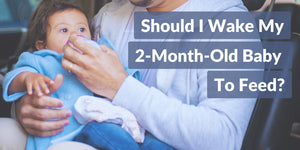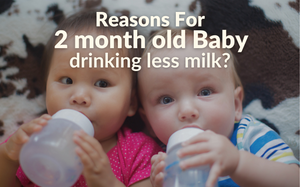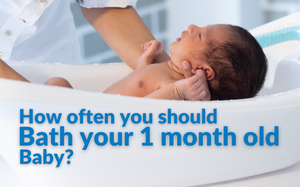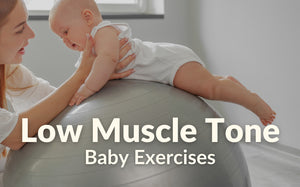Along with the excitement of the newborn’s arrival, every parent begins to get a little bit worried: "Is my baby healthy?" Even though less than 5% of newborns have congenital anomalies (birth defects), it is important to assess whether the baby is overall healthy. Read on to know how to recognise these congenital anomalies’ signs.
Blindness
Blindness may often go undetected for long periods in childhood as infants cannot speak. It is crucial to diagnose visual disabilities as early as possible in babies, as many causes of visual impairment and blindness can be treated or prevented.It is best to consult a doctor as early as possible if your baby:
- Squints
- Do not make eye contact.
- By the age of three months, they do not track any object or fix their gaze on a face.
- Does not smile by the age of six weeks.
- Has nystagmus (involuntary rapid eye movements).
- Has photophobia (light sensitivity).
- It has a white pupillary reflex, or leukocoria (the pupil looks white).
Deafness
This is one of the major congenital anomalies' signs. Deafness is also not easily detected in infants. Hearing is necessary for infants to be able to speak properly. Therefore, loss of hearing is often associated with loss of speech.Detecting deafness at an early age prevents problems with communication and delays in language and speech. Loss of hearing affects approximately 1 to 3 infants out of 1000. Newborn babies should be screened for hearing defects before they are discharged from the hospital.
You should consult a doctor if your baby:
- Has poor or no speech development.
- Is often inattentive.
- Requires high volume when watching television or video.
- Has difficulty learning, does not respond when their name is called out, and is frustrated when there is too much background noise.
- Has inaccurate or no response to conversation-level speech.
Neurological Disorders
Your baby’s brain development starts around conception and continues through and beyond birth. An injury or interference in brain development from any cause during this time may lead to neurological problems that may manifest at birth or immediately after.Some common neurological disorders include:
- Seizures Intracranial haemorrhage (bleeding in the brain)
- Encephalopathy (a condition that affects the consciousness level of the baby)
- Birth asphyxia (caused by inadequate oxygen supply to the baby before, during, or immediately after birth)
- Congenital neurological defects (incorrect development of the spinal cord and brain, leading to a variety of disorders)
You should visit the doctor if your baby has any of the following congenital anomalies signs and symptoms:
- Difficulty in feeding
- Fussiness
- Changes in body temperature
- Lowered consciousness level
- Abnormal movements are higher or lower than normal muscle tone
- It has a rapid change in head size and a tense soft spot
- Missing developmental milestones, such as holding their heads up, crawling, sitting, walking, or feeding themselves
If the doctor suspects conditions such as a spinal cord injury, they will conduct a series of neurological tests, e.g., plantar reflex, in which the doctor strokes the sole firmly from the heel to the toes and across the sole to see if the big toe moves upwards and the other toes fan out.
The plantar reflex is normally observed in babies under the age of two. If it is present in babies over two years of age, it could indicate a problem with the central nervous system.
Spina bifida
If the baby’s spinal cord, brain, or membranes surrounding the brain do not fully develop, it is known as spina bifida (split spine). Depending on the type and severity of spina bifida, the symptoms may vary.You should visit the paediatrician if you notice any of the following congenital anomalies signs and symptoms:
- Pain in the legs or back chronic constipation, urinary or bowel incontinence, and no other explanation.
- Limping through chronic urinary tract infections
- The presence of a birthmark, a small clump of hair, a spine dimple, an abnormal curvature of the spine, and walking on the toes
- Sometimes the symptoms may be clearly visible, such as a protruding sac or an opening in the spine.
Congenital heart defects
This group of disorders is one of the most common birth defects. It affects the structure or function of the baby’s heart and may be mild or severe. About 25% of babies with a heart defect may need a procedure or surgery before 12 months of age.You should visit the paediatrician if you notice symptoms such as:
- Lethargy or drowsiness
- Rapid breathing or difficulty in breathing
- Tiredness during feedings
- Blue-tinged lips or nails
The presence of any of these symptoms by themselves may not indicate that your baby has a congenital anomaly. So, if you notice anything out of the ordinary, it is best to consult your paediatrician so that they can run some tests to check your baby’s health.
You can count on us to help you learn more about your baby's growth and nutrition. To get the most of your babies developmental needs, download the BabyG App, now!
References:
- Boston Children’s Hospital. Birth defects and congenital anomalies [2021]
- American Academy of Ophthalmology. What is nystagmus? [2021].
- American Association for Pediatric Ophthalmology & Strabismus. Leukocoria [2021].
- National Association of the Deaf. Community and culture- Frequently asked questions [2021].
- KidsHealth. Hearing evaluation in children [2021].
- Children’s Hospital of Pittsburgh. What are neonatal neurological disorders? [2021].
- Children’s Hospital of Pittsburgh. Neonatal neurological disorder diagnosis and symptoms [2021].
- Acharya AB, Jamil RT, Dewey JJ. Babinski reflex. StatPearls [2021].
- MedlinePlus. Babinski reflex [2021].
- Boston Children’s Hospital. Spina bifida [2021].
- Centers for Disease Control and Prevention. What are congenital heart defects? [2021].













LEAVE A COMMENT